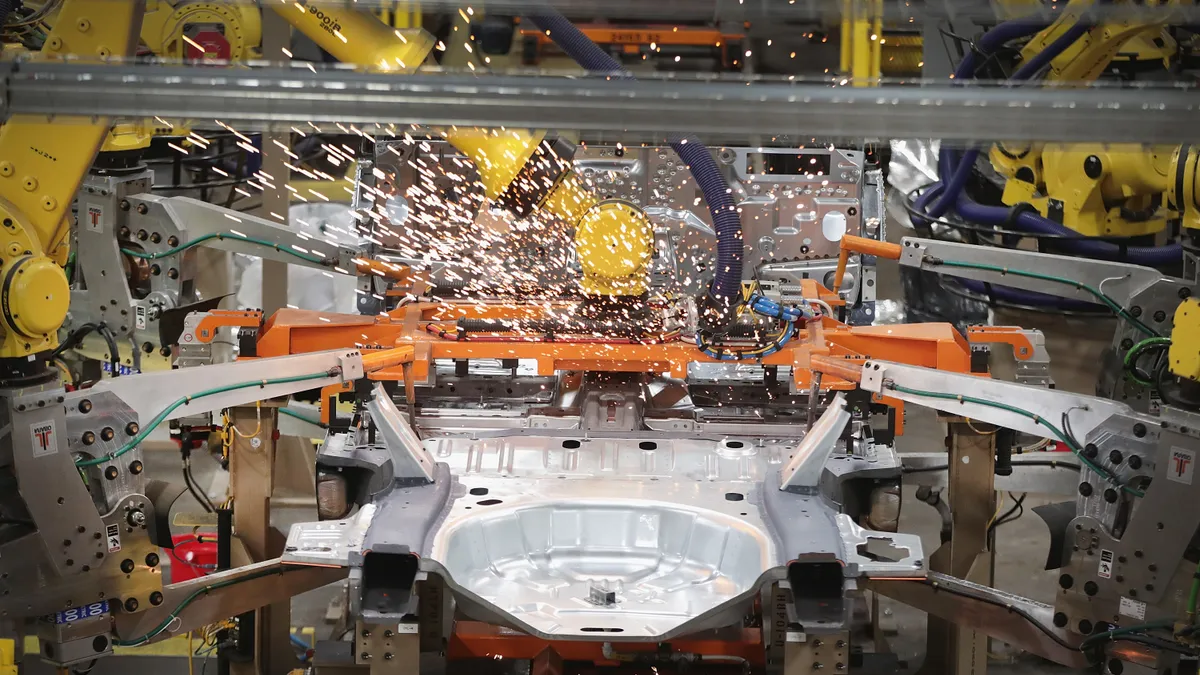Dive Brief:
- Manufacturing production expanded for the 18th straight month in November as hiring picked up steam and supplier deliveries somewhat improved, according to the Institute for Supply Management's Manufacturing Report on Business released Wednesday.
- New order, production and employment levels grew at a faster pace compared to October. Supplier deliveries slowed in November, but at a more measured pace, which the report noted was an early sign of supplier performance improving.
- Still, manufacturers can't keep up with demand fast enough as they deal with a backlog of orders and a shortage of components. The Customers' Inventories Index hit 25.1%, the second-lowest point in the history of the index. "At present, we're just not filling the shelves," ISM Chair Timothy Fiore said on Manufacturing Talk Radio.
Dive Insight:
Labor constraints have been one of the biggest hurdles for manufacturers to ramp up production, and an acceleration in hiring "gives me more assurances that we will move into 2022 in a very good way," said Fiore.
Hiring conditions improved in November, with 7% of manufacturers reporting hiring improvements, up from 5% in October, according to the ISM report.
Cabinetmaker American Woodmark Corporation saw production levels take a hit this year, with labor shortfalls "far and away the biggest impact," CFO Paul Joachimczyk said on the company's Q3 earnings call.
Enhanced attraction and retention efforts expanded the hiring pool, allowing the company to restart production in facilities that were idle over the summer due to a lack of labor. American Woodmark's October production level improved to its highest point since the spring.
But even with some improvements in hiring, manufacturers still have trouble with output as material shortages continue to constrain production. The sector faces high inventory levels as manufacturers stockpile raw materials and grow their work-in-progress inventory.
Top products in short supply in November included critical components such as aluminum, electrical components, silicone, plastic products and resins, according to the ISM report.
Shortages, hiring issues and other bottlenecks come as manufacturers face record-high demand and large backlogs of orders. Even if supply chain issues were resolved, it would still take a while for the sector to catch up with demand.
"Once demand eases, there's probably two to three months worth of output just to fill those shelves," Fiore said.














